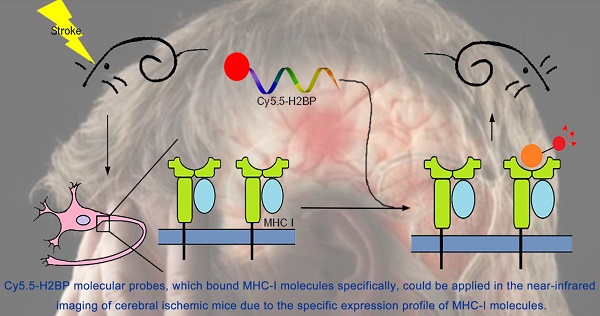当前位置:
X-MOL 学术
›
Theranostics
›
论文详情
Our official English website, www.x-mol.net, welcomes your
feedback! (Note: you will need to create a separate account there.)
C-X-C Motif Chemokine 10 Impairs Autophagy and Autolysosome Formation in Non-alcoholic Steatohepatitis
Theranostics ( IF 12.4 ) Pub Date : 2017-07-08 , DOI: 10.7150/thno.19068 Xiang Zhang , William KK Wu , Weiqi Xu , Kwan Man , Xiaojuan Wang , Juqiang Han , Wing Yan Leung , Ruonan Wu , Ken Liu , Jun Yu
Theranostics ( IF 12.4 ) Pub Date : 2017-07-08 , DOI: 10.7150/thno.19068 Xiang Zhang , William KK Wu , Weiqi Xu , Kwan Man , Xiaojuan Wang , Juqiang Han , Wing Yan Leung , Ruonan Wu , Ken Liu , Jun Yu

|
C-X-C motif chemokine 10 (CXCL10) is a crucial pro-inflammatory factor in chronic hepatitis. Autophagy dysregulation is known to contribute to hepatic inflammatory injury. Hence, we investigated the regulatory effect of CXCL10 on the autophagosome-lysosome system during non-alcoholic fatty liver disease (NAFLD) development. The effect of CXCL10 ablation by neutralizing monoclonal antibody (mAb) or genetic knockout on autophagic flux was evaluated in cultured hepatocytes and animal models of NAFLD. Results demonstrated that CXCL10 ablation protected against hepatocyte injury in vitro and steatohepatitis development in mice. Autophagic flux impairment was rectified by CXCL10 inhibition using anti-CXCL10 mAb in AML-12 and HepG2 liver cell lines and primary hepatocytes as evidenced by the attenuated accumulation of p62/SQSTM1 and LC3-II proteins and increased autophagic protein degradation. Impaired autophagic flux was significantly restored by CXCL10 knockout or anti-CXCL10 mAb in mice. Bafilomycin A1, an inhibitor of autolysosome formation, abolished the rectifying effect of anti-CXCL10 mAb or CXCL10 knockdown in AML-12 and primary hepatocytes, indicating CXCL10 impaired late-stage autophagy in NAFLD. Anti-CXCL10 mAb treatment also increased the fusion of LC3-positive autophagosomes with lysosomes in HepG2 cells challenged with palmitic acid, suggesting that CXCL10 ablation restored autolysosome formation. Consistently, the number of autolysosomes was significantly increased by CXCL10 knockout in mice as shown by electron microscopy. In conclusion, upregulated CXCL10 in steatohepatitis impairs autophagic flux by reducing autolysosome formation, thereby inhibiting autophagic protein degradation and the accumulation of ubiquitinated proteins, leading to the development of steatohepatitis.
中文翻译:

CXC主题趋化因子10损害非酒精性脂肪性肝炎中的自噬和溶酶体形成。
CXC基序趋化因子10(CXCL10)是慢性肝炎中至关重要的促炎因子。已知自噬失调会导致肝炎性损伤。因此,我们调查了非酒精性脂肪肝疾病(NAFLD)发育过程中CXCL10对自噬体-溶酶体系统的调节作用。在培养的肝细胞和NAFLD动物模型中评估了通过中和单克隆抗体(mAb)或基因敲除对CXCL10的消融对自噬通量的影响。结果表明,CXCL10消融可在体外防止肝细胞损伤和小鼠脂肪性肝炎的发展。通过在AML-12和HepG2肝细胞系和原代肝细胞中使用抗CXCL10 mAb抑制CXCL10可以纠正自噬通量损害,这可以通过p62 / SQSTM1和LC3-II蛋白的积累减少以及自噬蛋白降解的增加来证明。CXCL10敲除或抗CXCL10 mAb在小鼠中可显着恢复受损的自噬通量。Bafilomycin A1是自溶酶体形成的抑制剂,它消除了AML-12和原代肝细胞中抗CXCL10 mAb或CXCL10的抑制作用,表明CXCL10损害了NAFLD的晚期自噬。抗CXCL10 mAb处理还增强了用棕榈酸攻击的HepG2细胞中LC3阳性自噬体与溶酶体的融合,表明CXCL10消融可恢复自溶酶体的形成。始终如一 电子显微镜显示,CXCL10敲除小鼠显着增加了溶酶体的数量。总之,脂肪性肝炎中CXCL10的上调通过减少自溶体的形成而损害自噬通量,从而抑制自噬蛋白降解和泛素化蛋白的积累,从而导致脂肪性肝炎的发展。
更新日期:2017-11-01
中文翻译:

CXC主题趋化因子10损害非酒精性脂肪性肝炎中的自噬和溶酶体形成。
CXC基序趋化因子10(CXCL10)是慢性肝炎中至关重要的促炎因子。已知自噬失调会导致肝炎性损伤。因此,我们调查了非酒精性脂肪肝疾病(NAFLD)发育过程中CXCL10对自噬体-溶酶体系统的调节作用。在培养的肝细胞和NAFLD动物模型中评估了通过中和单克隆抗体(mAb)或基因敲除对CXCL10的消融对自噬通量的影响。结果表明,CXCL10消融可在体外防止肝细胞损伤和小鼠脂肪性肝炎的发展。通过在AML-12和HepG2肝细胞系和原代肝细胞中使用抗CXCL10 mAb抑制CXCL10可以纠正自噬通量损害,这可以通过p62 / SQSTM1和LC3-II蛋白的积累减少以及自噬蛋白降解的增加来证明。CXCL10敲除或抗CXCL10 mAb在小鼠中可显着恢复受损的自噬通量。Bafilomycin A1是自溶酶体形成的抑制剂,它消除了AML-12和原代肝细胞中抗CXCL10 mAb或CXCL10的抑制作用,表明CXCL10损害了NAFLD的晚期自噬。抗CXCL10 mAb处理还增强了用棕榈酸攻击的HepG2细胞中LC3阳性自噬体与溶酶体的融合,表明CXCL10消融可恢复自溶酶体的形成。始终如一 电子显微镜显示,CXCL10敲除小鼠显着增加了溶酶体的数量。总之,脂肪性肝炎中CXCL10的上调通过减少自溶体的形成而损害自噬通量,从而抑制自噬蛋白降解和泛素化蛋白的积累,从而导致脂肪性肝炎的发展。







































 京公网安备 11010802027423号
京公网安备 11010802027423号